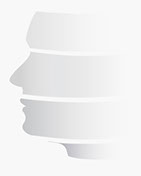What is Cluster Headache?
They are called cluster headaches because the attacks come in clusters lasting 2 weeks to rarely even months and then can disappear for months or years. The pain arrives with little warning, and it has been described as the most severe and intense pain of any headache type. It lasts from 30 to 45 minutes, although it might persist for several hours before it disappears and it can reoccur later in the day. Most sufferers experience one to four headaches a day during a cluster period. These headaches frequently surface during the morning or late at night.
Clusters often occur during spring or autumn and may be associated with the change in sleep patterns caused by the change in the length of the day and night. Approximately 10 percent of the sufferers, however, experience chronic cluster headaches that occur all year long.
Who has Cluster Headaches?
The headache is usually one sided and rarely switches sides from one attack to another. Most often cluster headaches start with pain around one eye, "like a nail or knife stabbing or piercing" the eye, it often is accompanied by a tearing or bloodshot eye and a runny nose on the side of the headache. It can radiate from the eye to the forehead, temple and cheek on the same side. The pain of a cluster headache has been described as piercing, burning, throbbing, pulsating, and so excruciating that most victims cannot sit still and feel compelled to rock in a chair, walk back and forth, or bang their heads against something. This is probably the biggest difference between cluster headaches and migraines. In contrast, most migraine patients want to lay down and even sleep if they can. Unfortunately, it is possible for a person to suffer from both migraines and clusters, although it is rare.
Demographics
These are very rare headaches. It is estimated that less than one percent of the population are victims of cluster headaches. Most patients are between the ages of 20 and 45. Men suffer from these awful headaches more than women (about five to one).
Site Map
Disclaimer




